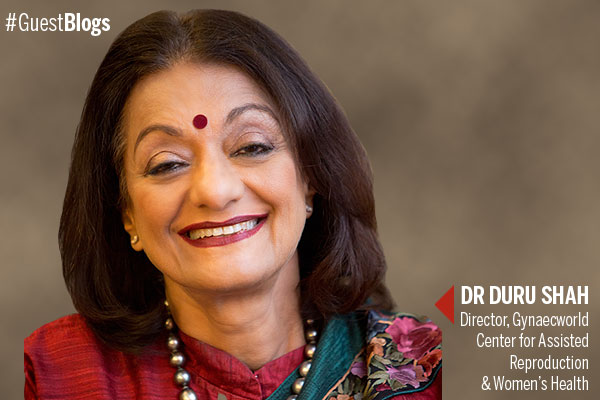Infertility is becoming a huge concern in India. With 30 million infertile couples currently, it is estimated that in the year 2020, 2,50,000 IVF cycles will be performed in the country. Needless to say, the cost of infertility treatments too continues to rise, making it unaffordable to a large number of couples. There is a huge need for not just insurance companies to cover infertility, but the government also has to chip in and make necessary provisions in the Union Budget 2017-18 to bring infertility treatment under insurance cover.
This is why, during my presidential year (2017-2018) at the Indian Society for Assisted Reproduction (ISAR), I had made it my mission to push for insurance companies and the government to make necessary provisions to bring infertility treatment under insurance cover in India. And I am delighted to note that the change has been brought about by the efforts of the Govt of India especially the division heading the Ayushman Bharat programme and the Insurance Regulatory Authority of India.
In August 2018, the Insurance and Regulatory Authority of India (IRDAI), asked for the removal of around 10 items, including procedures such as dental, stem cell, infertility and psychiatric treatment, from the list of ‘optional cover’ for health insurance. This would mean that these procedures could be made part of standard insurance policies. Some of them could even be made mandatory. It is heartening to note that infertility has been included in this list—the fact that the Indian insurance sector will now provide insurance cover for infertility treatment will definitely make it more affordable to the millions of couples who need it.
As the President of ISAR, I dedicated the year 2017- 2018 as ‘ISAR’s year of Empowerment: through Education, Ethics and Empathy’. The empathy here implied empathy for infertile couples. As a part of my mission, I met with insurance companies, the Ministry of Health and campaigned to make infertility treatment easier for couples seeking treatment for infertility, by having it covered under their health insurance plan. And now, with the Ministry of Health considering this proposal, I am happy to see my efforts bearing fruit. I must compliment the Ministry of Health for having responded so quickly and positively.
Research has shown that one in almost one in every five to six couples have a problem conceiving on their own, which is a clear indication of the large number of people who need assistance to overcome their need to have children. Very often simple advice or a little help from the Gynecologist helps them in their pursuit of having their own biological child . But occasionally they require advanced procedures like IVF, ICSI, egg donation, etc. Simpler treatments are manageable and affordable with every Gynecologist , but advanced procedures need to be undertaken at centers which offer assisted reproduction.
However, the fact is that the cost of IVF, ranges upwards of INR 1.5 lakh to INR 2 lakh per cycle of treatment, mainly because the consumables used for IVF and the cost of maintaining a high quality embryology lab are high. Hence a huge number of couples desist from seeking treatment or resort to poor quality care. Infertility treatment not only involves expenditure but it also involves a huge amount of investment from the couple seeking treatment–this includes daily injections, the time spent on treatment, giving up on their careers due to frequent visits to the clinic, the financial loss, the mental agony, and many a times, disappointment when the pregnancy test is negative after such a long ordeal.
Their journey while seeking infertility treatment will definitely be easier now, thanks to IRDAI’s change in policy. And I am sure we will soon begin to see the effect of this change in the number of patients seeking affordable medical treatment for infertility.
On another note, if we start creating our own consumables under the ‘Made in India’ programme, instead of importing all of them which increases the cost of treatment, we will be able to make IVF much more affordable than it is today.
By Dr Duru Shah, Director, Gynaecworld, Center for Assisted Reproduction & Women’s Health
- Advertisement -



Comments are closed.